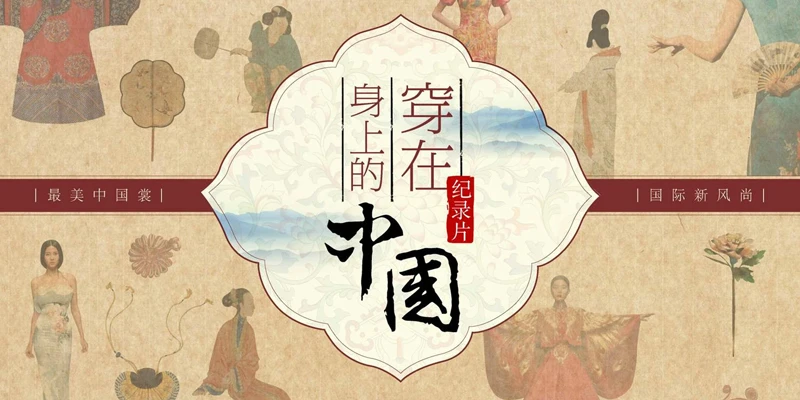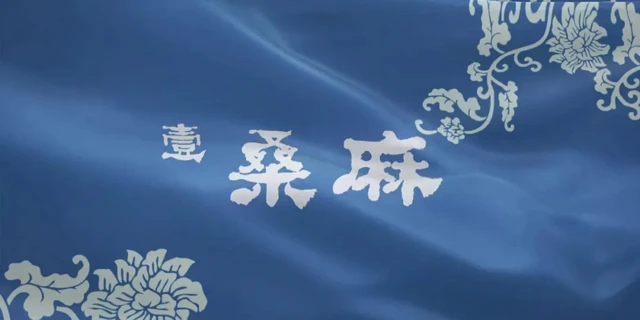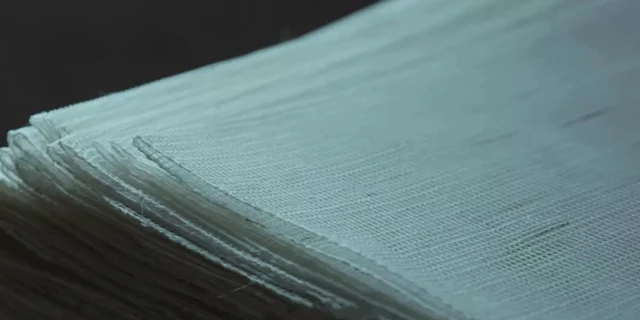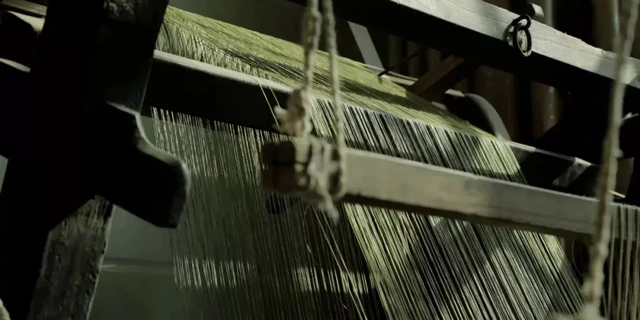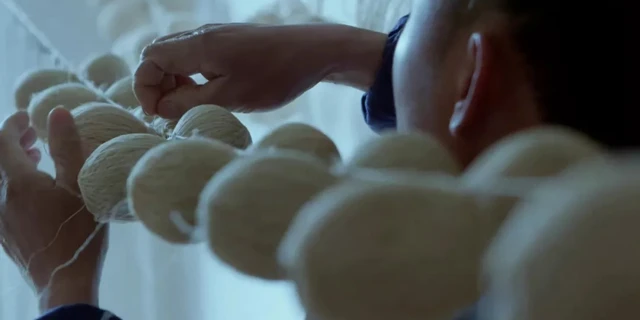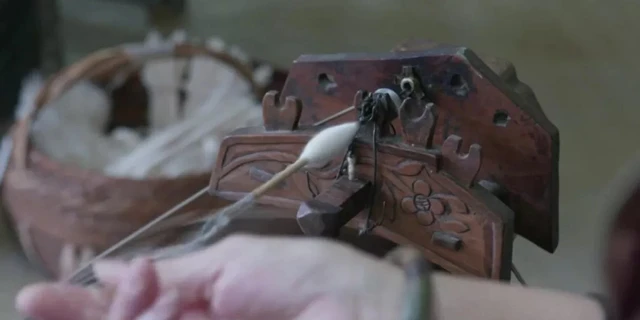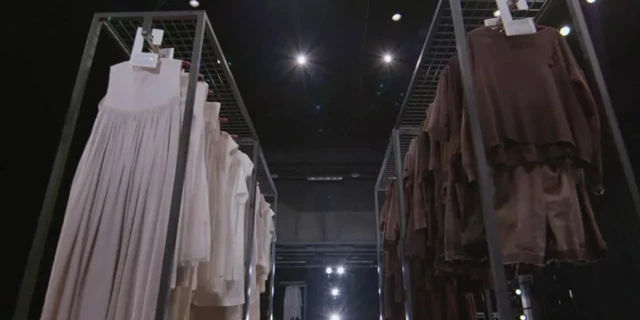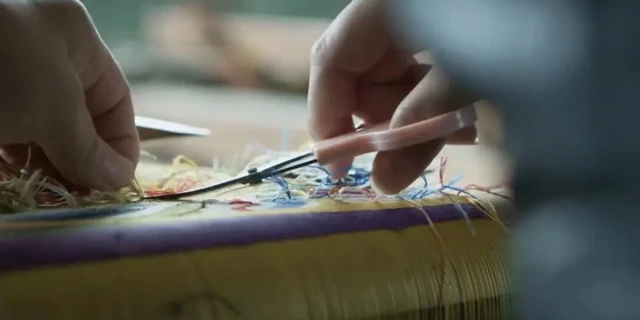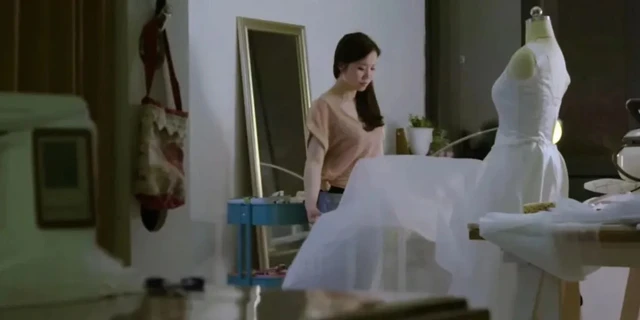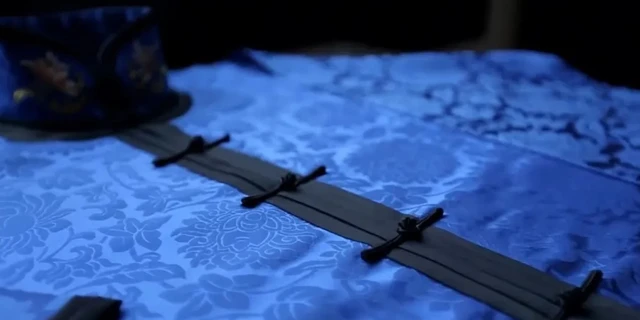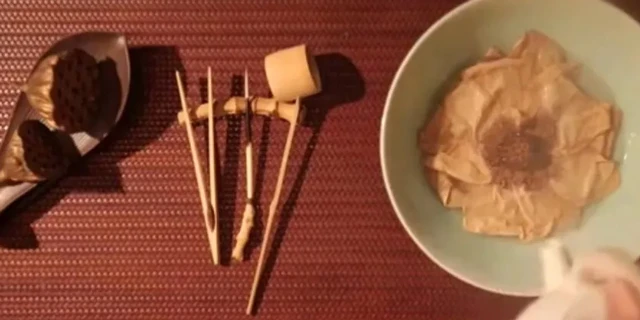Clothing, food, shelter and transportation, the word clothing is the first. Throughout history, the Chinese have consistently showcased their pursuit of clothing. From the exquisite attire donned by emperors in ancient palaces to the fashionable ensembles spotted in bustling city streets, people appear to consistently have a wealth of commentary regarding fashion trends.
Today, a documentary that was specifically created to delve into the rich Chinese clothing culture would be recommended - "Wearing China on the Body". It tells the story of Chinese etiquette, clothing expression, folk art inheritance, and human relationships through vivid clothing, and skillfully reflects the changes in people's aesthetic preferences in the era.
The Chinese documentary "Wearing China on the Body" is composed of six episodes, including Sang Ma, Bu Yi, Ni Shang, Jin Xiu, Zi Jin, and Jiang Xin. This documentary interprets Chinese culture through the perspective of clothing, arousing the audience's profound longing for clothing aesthetics from various perspectives such as fashion, elegance, intricacy, culture, humanity, and emotion. Enable them to comprehend the China within which we reside from the dreamlike clothing realm.
Episode 1: Sang Ma
This episode will trace the origin of magnificent Chinese costumes, choose the life course of different characters, and feel the innocence and touching from the original life given to us by nature. Little by little, restore the simplicity of the Xia cloth, restore the gorgeous silk, restore a big beautiful China to wear on the body. Here, let's take a look at the first story of the first episode, let's feel this visual feast about Chinese clothing.
As one of the ancient crops in China, hemp is one of the earliest textiles that people wore. The process of growing ramie is a series of rural labor paintings with a touch of nature.
Taiping Village, located in Liuyang Mountain within Hunan Province, in a lively March day. The wet and warm weather is ideal for planting. Farmer Tan Zhixiang, equipped with a hoe, goes into the mountains behind the village to harvest ramie. He plans to cultivate this crop on his newly reclaimed two acres of land.
Ramie has a long history in China, with records in the "Classic of Poetry" depicting young men and women engaging in activities such as dipping, washing, and bleaching ramie together in rivers. The fabric crafted from ramie is characterized by its breathability and refreshing quality, making it particularly suitable for use during summer. Consequently, the textile produced from ramie through traditional techniques is also known as Xia cloth.
The production of Xia cloth in Liuyang features fine texture, white color. At present, only Tan Zhixiang is still earning a living by producing Xia cloth in Taiping village. Through Tan Zhixiang's skilled hands, we can observe the thousand-year-old traditional hemp weaving process. Starting from the ramie skin, a thread of plant fiber is meticulously separated by hand, then meticulously divided into threads as fine as hair, and finally twisted into a continuous strand. This is known as Ji hemp.
The completed bobbin of yarn is hung individually, the hemp thread is extracted, and it is arranged on a wooden frame destined for the spinning wheel, the process is known as Zheng Jing. It takes Tan Zhixiang an entire day to extract the yarn for a single piece of fabric.
In the fast-moving business era, where quick profits are a trend, working like Tan Zhixiang seems anachronistic. There are more efficient machines, there are more convenient fabrics, and there is 3D printing technology, doing these useless jobs for what? However, everything exists for a reason, and some people are especially attracted to craftsmen like Tan Zhixiang.
Ma Ke, is a top designer in the fashion industry. She loved the way of life in the country and in the field. She said farmers were like poets of the ground, like musicians who compose music.
Ma Ke's studio, which she named Wu Yong (Useless), preserves many of the folk handicrafts and traditional textile artists she found in the mountainous countryside of the southwest. Here, she provides a space where slow, simple, natural crafts can be reinvigorated. Ma Ke claims that her craft embodies a type of luxurious simplicity.
This is because she employs the most direct methods from the production of clothing materials to the dyeing of colors for clothing, endeavoring to reconnect with the genuine essence of humanity through natural and uncomplicated elements: From the intricate of plant growth across the four seasons on Earth, to the delicate interweaving of threads on a loom, to the masterful manipulation of a needle and thread by skilled hands.
The fabric that condenses the artist's life time is soaked again and again with the earthy smell of plant juice, it radiates simple vitality. If Ma Ke is the luxury of poverty, then Lin Huaimin is elegant anger. As the founder of Cloud Gate Dance Theater, Lin Huaimin has been trying to explore the eternal artistic conception of Oriental culture with fleeting dances. When they met, they just clicked.
The costumes for Cloud Gate Dance Theater latest works "White Water" and "Dust" are made by Ma Ke. Lin Huaimin said that the clothes made by Ma Ke are different from others, it is the kind of original power from the land and from life that he has been looking for. "I think Ma Ke’s clothes have found a comfortable, Western fashion, often paying attention to its shape and stuffing people into the shape. Ma Ke' clothes make people feel that you are the owner of the clothes, and they are very comfortable to wear". The story of the first episode has been recounted. Here is a synopsis of the remaining five episodes.
Episode 2: Jin Xiu
This episode will take you into a dreamlike realm crafted by artisans, where embroidery comes alive like a painting, and brocade is as beautiful as a cloud of rainbows. People will feel the warmth and essence of ancestral traditions that have been passed down through countless generations.
Episode 3: Ni Shang
This episode primarily revolves around fashion and clothing, exploring the diverse interpretations and pursuits of style across different age groups and social classes. It delves into the understanding and appreciation of fashion and trends, shedding light on the significance of these elements in people's lives. The world is always full of colors. Some people are devoted to the love and revelry of their unique selves, while others immerse themselves in gentle years, looking back at the subtle and sensual oriental aesthetics. In the ever-changing kaleidoscope of Ni Shang, we can find the traces of the times, as well as pursue the unique beauty that belongs to us among the thousands of vibrant Ni Shang.
Episode 4: Bu Yi
From adulthood independence to far-away travels, from engagement to the birth of a new life, every specific life milestone cannot be separated from suitable clothing for the story setting. This episode tells about the vicissitudes of the human world under the witness of clothing, the ups and downs of life, but also give ordinary clothes fresh life.
Episode 5: Zi Jin
This episode primarily revolves around the attire, etiquette, and belief culture of China. Due to variations in ethnic regions, dynasties, and occasions for wearing clothes, the diverse and ever-changing contexts have rendered Chinese clothing culture vibrant and colorful. Whether it is the reappear of a Han general's armor or the restoration of the empress's Dashan Xiapi, we meander through these diverse and stunning Chinese costumes, delving into the past that has already faded away while concurrently seeking the elusive self that was lost.
Episode 6: Hua Xia
There exists an elegance in the dress code, which is referred to as Hua; there lies a grandeur in etiquette, thereby it is denominated as Xia. The amalgamation of dress code and etiquette has been recognized as a moniker for a magnificent nation. Clothing, an extension of human cognition, mirrors our individuality and accentuates our cultural identity. Charming, an abstract concept in aesthetics, has been an integral part of Chinese attire for millennia, cultivating our nation's proud sartorial style.
